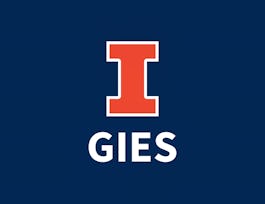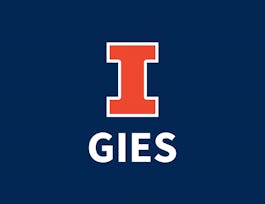All goods and services are subject to scarcity at some level, which requires that society develop some allocation mechanism to determine who gets what. Over recorded history, these allocation rules were usually command based, meaning that the king or the emperor would decide. In contemporary times, most countries have turned to market-based allocation systems. In markets, prices act as rationing devices, encouraging or discouraging production and encouraging or discouraging consumption to find an equilibrium allocation of resources. To understand this process, businesses construct demand curves to capture consumer behavior and consider supply curves to capture producer behavior. The resulting equilibrium price “rations” the scarce commodity.


Firm Level Economics: Consumer and Producer Behavior
This course is part of Managerial Economics and Business Analysis Specialization
Taught in English
Some content may not be translated

Instructor: Larry DeBrock
89,343 already enrolled
Included with 
Course
(2,394 reviews)
97%
Skills you'll gain
Details to know

Add to your LinkedIn profile
14 quizzes
Course
(2,394 reviews)
97%
See how employees at top companies are mastering in-demand skills

Build your subject-matter expertise
- Learn new concepts from industry experts
- Gain a foundational understanding of a subject or tool
- Develop job-relevant skills with hands-on projects
- Earn a shareable career certificate


Earn a career certificate
Add this credential to your LinkedIn profile, resume, or CV
Share it on social media and in your performance review

There are 5 modules in this course
You will become familiar with the course, your classmates, and our learning environment. The orientation will also help you obtain the technical skills required for the course.
What's included
2 videos6 readings1 quiz1 discussion prompt
The fundamental problem of scarcity challenges us to think about an allocation mechanism to determine what is produced and who consumes it. We will discuss scarcity and allocation mechanisms. In this course, we will focus on markets and prices as the solution to this resource allocation problem.
What's included
7 videos2 readings3 quizzes
Markets are frequent targets of governments. This module will introduce government policy intervention into the market. This intervention can be direct control of prices or it could be indirect price pressure through the imposition of taxes or subsidies. Both forms of intervention are impacted by elasticity.
What's included
10 videos2 readings4 quizzes
This module will introduce cost theory. Firms are interested in producing profits, which are the residuals when costs are subtracted from revenue. Earlier modules constructed demand curves. They give us an idea of how many units of product we can sell at different prices; this would be firm revenue. We will work to understand inputs, production, and costs.
What's included
14 videos2 readings3 quizzes
The firm goal of profit maximization requires an understanding of costs and revenues. In this module, we will see how a firm optimally responds to a given market price by finding the profit maximizing output. The level of profits at this maximum profit point will help determine short run equilibrium.
What's included
10 videos5 readings3 quizzes1 peer review1 plugin
Instructor

Recommended if you're interested in Finance

University of Illinois at Urbana-Champaign

University of Illinois at Urbana-Champaign

University of Illinois at Urbana-Champaign

University of Illinois at Urbana-Champaign
Get a head start on your degree
This course is part of the following degree programs offered by University of Illinois at Urbana-Champaign. If you are admitted and enroll, your coursework can count toward your degree learning and your progress can transfer with you.
Why people choose Coursera for their career




Learner reviews
Showing 3 of 2394
2,394 reviews
- 5 stars
85.44%
- 4 stars
12.47%
- 3 stars
1.25%
- 2 stars
0.25%
- 1 star
0.58%
New to Finance? Start here.

Open new doors with Coursera Plus
Unlimited access to 7,000+ world-class courses, hands-on projects, and job-ready certificate programs - all included in your subscription
Advance your career with an online degree
Earn a degree from world-class universities - 100% online
Join over 3,400 global companies that choose Coursera for Business
Upskill your employees to excel in the digital economy
Frequently asked questions
Access to lectures and assignments depends on your type of enrollment. If you take a course in audit mode, you will be able to see most course materials for free. To access graded assignments and to earn a Certificate, you will need to purchase the Certificate experience, during or after your audit. If you don't see the audit option:
The course may not offer an audit option. You can try a Free Trial instead, or apply for Financial Aid.
The course may offer 'Full Course, No Certificate' instead. This option lets you see all course materials, submit required assessments, and get a final grade. This also means that you will not be able to purchase a Certificate experience.
When you enroll in the course, you get access to all of the courses in the Specialization, and you earn a certificate when you complete the work. Your electronic Certificate will be added to your Accomplishments page - from there, you can print your Certificate or add it to your LinkedIn profile. If you only want to read and view the course content, you can audit the course for free.
If you subscribed, you get a 7-day free trial during which you can cancel at no penalty. After that, we don’t give refunds, but you can cancel your subscription at any time. See our full refund policy.

